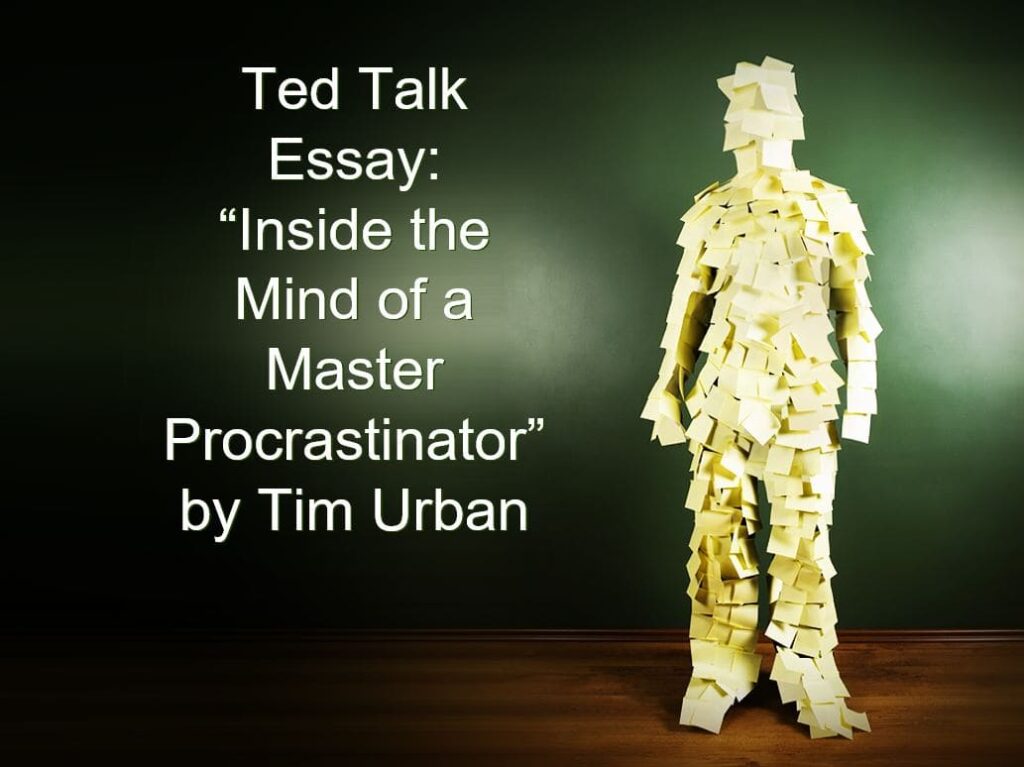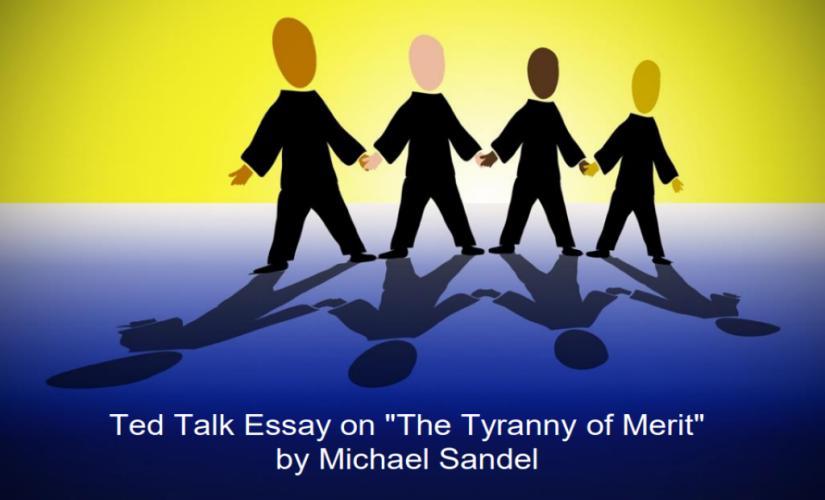Many people tend to habitually or intentionally carry forward a task. In this Ted Talk essay on “Inside the Mind of a Master Procrastinator” by Tim Urban, the author hilariously illustrates how the mind of a procrastinator works, the two main types of procrastination, and its detrimental effects. Moreover, I have personal experiences related to the topic and learned many lessons despite being surprised by one revelation in the video. Although I defend my habit of procrastinating, the video teaches people essential lessons on the consequences of the behavior and challenges my mentality following the interesting information that most procrastinators are unhappy and full of regrets.
The Mian Idea of the Video
The speaker provides a glimpse of how procrastinators think, using personal real-life experiences. For example, Urban was assigned a 90-page senior thesis to complete within one year but only used the last three days to complete the assignment and ended up with a “very very bad” result (00:53-02:54). As usual, he planned on how he could subdivide the paper to finish on time but failed to follow it with his scheme. More than 70% of students pursuing their undergraduate studies report that they procrastinate their academic work (Lee and Hall 1). This data implies that only a few people can plan their time rationally to complete their projects, while students will be workers. In this case, Urban ends up regretting the decision to carry forward the assignment just like most people do.

Managing the Time
The procrastinator’s mind makes them work only when they are in a panic, which may increase the chances of making mistakes. Urban uses an illustration of a monkey being in control until the time remaining is short, so the animal hurriedly completes the task (3:50-9:44). When the deadline approaches, the person will hurriedly complete the work to avoid shame or embarrassment. The implication is that, if an order does not have a deadline, the person will end up not doing it and regretting the decision, which is important to understand when people manage their or someone’s work.
Personal Experience
My personal experiences resonate with the typical behavior of a procrastinator. My procrastination type is called “the performer,” characterized by the shrinking time that I have to complete a task (Schiller and Boisvert par. 9). It is the pressure of avoiding the harmful consequences that make me work hard and submit the assignment on time. The strategy only works well for time-bound projects, leading to the risk of postponing things that need immediate attention until it is too late.
Applicable Information
The information from the video has a wide area of application, including academic and career developments. It is crucial to organize personal time and use strategies to increase effectiveness, such as having a timetable and adhering to it (Colegrove et al. 65). Personal schedules direct people to manage their days by allocating sufficient time for sleeping, eating, attending classes, and socializing with friends. Overall, life is about accomplishment, which means that every activity that needs to be completed is a potential area for applying the knowledge.
Surprising Information
The surprising moment in the video is the realization that most people who procrastinate are unhappy with the habit. Basically, the procrastinator’s mind works only when there is a clear deadline, but most life tasks require rational and purposeful decisions (Urban 11:50-12:08). Life tasks, such as reconciling with a spouse, visiting a friend, attending a seminar, and starting the desired course, do not have time restrictions but are still important. Hence, the detrimental effects will always come for people who carry forward tasks as they waste time.
Summing Up
In conclusion, I learned from the video that procrastination had detrimental effects and was surprised to know that most people with the habit had regrets. Firstly, the speaker regrets failing his thesis after delaying to start until the last minute and working under pressure. I learned that, if there is no deadline, a person may never do the work and regret it later in life. Also, while working under pressure, people tend to make more mistakes. Thus, this video remains a reminder that procrastination leads to unhealthy habits and bad outcomes, while it is important to find a way to “scare the monkey.”
Works Cited
Colegrove, M., et al. Be a Last-Minute Leader, Not a Procrastinator. iUniverse, 2016.
Lee, So Y., and Nathan C. Hall. “Understanding Procrastination in First-Year Undergraduates: An Application of Attribution Theory.” Social Sciences, vol. 9, no. 136, 2020, pp. 1-4, doi:10.3390/socsci9080136.
Schiller, Ali, and Marissa Boisvert. “The 4 Main Types of Procrastinators and How to Not Be One of Them, According to 2 Accountability Coaches.” Business Insider Africa, 19 Oct. 2020, africa.businessinsider.com/strategy/the-4-main-types-of-procrastinators-and-how-to-not-be-one-of-them-according-to-2/qf6ww6j.
Urban, Tim. “Inside the Mind of a Master Procrastinator.” TED, 2016, www.ted.com/talks/tim_urban_inside_the_mind_of_a_master_procrastinato.


